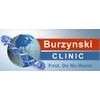
Preventative Skin Care for Children Undergoing Targeted CNS Tumor Therapy
Pediatric CancerCNS Tumor2 moreThis research study is examining a preventive skin care regimen for children diagnosed with a brain tumor and receiving anti-cancer therapy with a MEK, Pan-RAF, or BRAF inhibitor.

A Study of Intravenous EEDVsMit in Children With Recurrent / Refractory Solid or CNS Tumours Expressing...
Solid TumoursCNS TumoursThis is an open-label, sequential dose exploration study of single agent EEDVSMit administered by intravenous (IV) infusion twice weekly, followed by weekly maintenance dosing, in children with recurrent/refractory solid or CNS tumours.

The Role of Bevacizumab in the Treatment of Radiation Necrosis in Children With Central Nervous...
Radiation NecrosisThis study is being done to learn about the safety of the study drug bevacizumab(Avastin®), when used to treat radiation necrosis. The primary objective of this study is to test the feasibility of treating Central Nervous System (CNS) tumor patients suffering from radiation necrosis with bevacizumab every 2 weeks. The secondary objectives of this study are: To evaluate improvement in neurologic symptoms associated with bevacizumab as assessed by clinical evaluation; To investigate the neuro-imaging changes in radiation necrosis associated edema, including Mass Resonance (MR) spectroscopy; To evaluate changes in corticosteroid use in patients with radiation necrosis following treatment with bevacizumab; To evaluate changes in quality of life.

Observing Young Patients With Ependymoma Undergoing Standard Combination Chemotherapy
Brain and Central Nervous System TumorsCognitive/Functional Effects2 moreRATIONALE: Gathering information about how young patients with ependymoma respond to standard combination chemotherapy and learning about the long-term effects of this treatment may help doctors plan better treatment. PURPOSE: This phase III trial is observing young patients with ependymoma undergoing standard combination chemotherapy.

Treating Patients With Recurrent PCNSL With Carboplatin/BBBD and Adding Rituxan To The Treatment...
Brain and Central Nervous System TumorsDrug/Agent Toxicity by Tissue/Organ2 moreRATIONALE: Monoclonal antibodies, such as rituximab, can locate cancer cells and either kill them or deliver cancer-killing substances to them without harming normal cells. Drugs used in chemotherapy, such as carboplatin, cyclophosphamide, etoposide, etoposide phosphate, and cytarabine, use different ways to stop cancer cells from dividing so they stop growing or die. Osmotic blood-brain barrier disruption uses certain drugs to open the blood vessels around the brain and allow anticancer substances to be delivered directly to the brain tumor. Chemoprotective drugs such as sodium thiosulfate may protect normal cells from the side effects of carboplatin-based chemotherapy. Combining rituximab with chemotherapy given with osmotic blood-brain barrier disruption plus sodium thiosulfate may kill more cancer cells. PURPOSE: Phase II trial to study the effectiveness of combining rituximab with combination chemotherapy given with osmotic blood-brain barrier disruption plus sodium thiosulfate in treating patients who have refractory or recurrent primary CNS lymphoma.

Acetylcysteine, Mannitol, Combination Chemotherapy, and Sodium Thiosulfate in Treating Children...
Bone Marrow SuppressionBrain and Central Nervous System Tumors2 moreRATIONALE: Drugs used in chemotherapy, such as cyclophosphamide, etoposide phosphate, and carboplatin, work in different ways to stop the growth of tumor cells, either by killing the cells or by stopping them from dividing. Giving more than one drug (combination chemotherapy) may kill more tumor cells. Mannitol may help chemotherapy work better by making it easier for these drugs to get to the tumor. Chemoprotective drugs, such as acetylcysteine and sodium thiosulfate, may protect normal cells from the side effects of chemotherapy. Giving acetylcysteine together with mannitol, combination chemotherapy, and sodium thiosulfate may be an effective treatment for malignant brain tumors. PURPOSE: This phase I trial is studying the side effects and best dose of acetylcysteine when given together with mannitol, combination chemotherapy, and sodium thiosulfate in treating children with malignant brain tumors.

Imatinib Mesylate With or Without Radiation Therapy in Treating Young Patients With Newly Diagnosed...
Brain and Central Nervous System TumorsPhase I/II trial to estimate the maximum tolerated dose of imatinib mesylate in newly diagnosed brain stem gliomas and recurrent high grade gliomas and to assess the effectiveness of imatinib mesylate in treating young patients who have newly diagnosed intrinsic brain stem glioma. Imatinib mesylate may interfere with the growth of tumor cells by blocking the enzymes necessary for their growth. Radiation therapy uses high-energy x-rays to damage tumor cells. Combining imatinib mesylate with radiation therapy may kill more tumor cells.

Antineoplaston Therapy in Treating Children With Rhabdoid Tumor of the Central Nervous System
Rhabdoid Neoplasm of CNSRATIONALE: Current therapies for childhood Rhabdoid tumors provide limited benefit to the patient. The anti-cancer properties of Antineoplaston therapy suggest that it may prove beneficial in the treatment of childhood Rhabdoid tumors. PURPOSE: This study is being performed to determine the effects (good and bad) that Antineoplaston therapy has on children (> 6 months of age) with Rhabdoid tumors.

Temozolomide in Treating Patients With Leptomeningeal Metastases From a Solid Tumor or Lymphoma...
Brain TumorsCentral Nervous System Tumors1 moreRATIONALE: Drugs used in chemotherapy use different ways to stop cancer cells from dividing so they stop growing or die. PURPOSE: Phase II trial to study the effectiveness of temozolomide in treating patients who have leptomeningeal metastases from a solid tumor or lymphoma.

Hyperpolarized Carbon C 13 Pyruvate Magnetic Resonance Spectroscopic Imaging in Detecting Lactate...
Malignant Central Nervous System NeoplasmMetastatic Malignant Neoplasm in the Central Nervous SystemThis early phase I trial studies how well hyperpolarized carbon C 13 pyruvate magnetic resonance imaging works in detecting lactate and bicarbonate in participants with central nervous system tumors. Hyperpolarized carbon C 13 pyruvate magnetic resonance imaging may be used to measure the metabolic state of malignant brain tumors.
